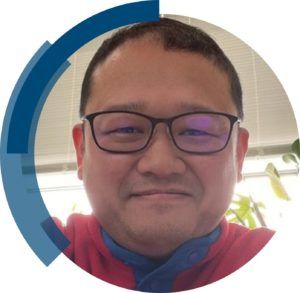We are excited to share the success of Manabu Yamada’s first-time independent article in ChemComm; “Facile separation of cyclic aliphatic and aromatic vapors using crystalline thiacalixarene assemblies with preorganized channels” included in the full milestones collection.
Read our interview with Manabu below.
What are the main areas of research in your lab and what motivated you to take this direction?
Our laboratory has two primary research themes. The first involves the development of adsorbents that use organic crystals based on macrocyclic compounds (calixarenes, thiacalixarenes, and cyclodextrins) to effectively separate small organic molecules. The second involves the development of extractants and adsorbents based on macrocyclic compounds and pincer ligands to effectively separate rare (precious) metals.
We were motivated to conduct this research for the following reasons: during my research on organic crystals, I became fascinated by the beauty of crystals, as well as their interesting properties, such as the selective incorporation of characteristic organic vapor components. During my research on rare metal separators, I found that I enjoyed designing extractants to recognize and separate specific metals.
Can you set this article in a wider context?
Cyclohexane and methylcyclohexane were synthesized via the hydrogenation of benzene and toluene, respectively. However, the unreacted aromatic material remains in the effluent stream of the reactor during this process. The effective separation of the cyclic aliphatic and aromatic compounds via conventional distillation is impossible, and separations based on the size and molecular volumes are challenging.
To exploit the differences in molecular sizes and spatial structures of cyclohexane and benzene or those of methylcyclohexane and toluene, macrocyclic compounds have been utilized to separate cyclic alkane/aromatic hydrocarbon vapor mixtures. However, the separation of benzene/cyclohexane and toluene/methylcyclohexane mixtures using one type of macrocyclic compound has not yet been achieved.
At this time, we found that the facile and efficient separation of both benzene/cyclohexane and toluene/methylcyclohexane mixtures can be achieved using one type of crystalline thiacalxarene assembly featuring preorganized channel-like adsorption sites, which possess the adsorption properties of cyclic aliphatics and aromatics and the different retention capacities of each adsorbed molecule.
What do you hope your lab can achieve in the coming year?
In the future, we will investigate the adsorption properties of polar organic molecules using crystalline thiacalixarene assemblies. In addition, we will attempt to develop novel organic crystals based on other macrocyclic compounds and evaluate their adsorption and separation properties for small organic molecules.
Describe your journey to becoming an independent researcher.
I decided to become a researcher when I was a Ph.D. student under Prof. Fumio Hamada at Akita University. I was fascinated by the inclusion phenomena of macrocyclic compounds and the beauty of macrocycle-based organic crystals. After graduation, I worked as a postdoctoral researcher at the Akita University Venture Business Laboratory in the field of supramolecular chemistry. I was then hired as a tenure-track assistant professor in the tenure-track program for young faculty members in the field of mineral resource research at Akita University, where I took on the challenge of a new research field: the development of extractants that can efficiently recover platinum group metals. Fortunately, with the support of my superiors, I became an independent researcher.
What is the best piece of advice you have ever been give?
I do not know if this is good advice for everyone, but I was once told, “the only privilege of a chemist is to be able to converse with compounds.” This is what I keep in mind as I continue my research. I believe this is the best advice I have ever received, as it has made me realize the importance of enjoying chemistry on a daily basis.
Why did you choose to publish in ChemComm?
ChemComm is a high-impact journal read by chemists across a wide range of fields. Additionally, it publishes research articles that are novel, urgent, and very compelling. These attributes are what motivated me to publish my article in ChemComm.
 |
Manabu Yamada completed his PhD at Akita University, Japan, under the guidance of Prof. Fumio Hamada, where he explored the crystal structures of metal complexes of macrocyclic compounds. He then spent approximately two years as a postdoctoral researcher at the Akita University Venture Business Laboratory, Japan. In 2012, he accepted a tenure-track assistant-professorship at Akita University, working on the development of new extractants for the recovery of rare metals from secondary resources. He was appointed principal investigator of this project in 2017. Since 2022, he has been an Associate Professor at Akita University, with a research focus on the development of extractants and sorbents for the effective and selective separation of metals and small organic compounds.
Twitter: @Akita_Lab ResearchGate: https://www.researchgate.net/profile/Manabu-Yamada-2 |
Explore more ChemComm Milestones news and updates on our Twitter: @ChemCommun










